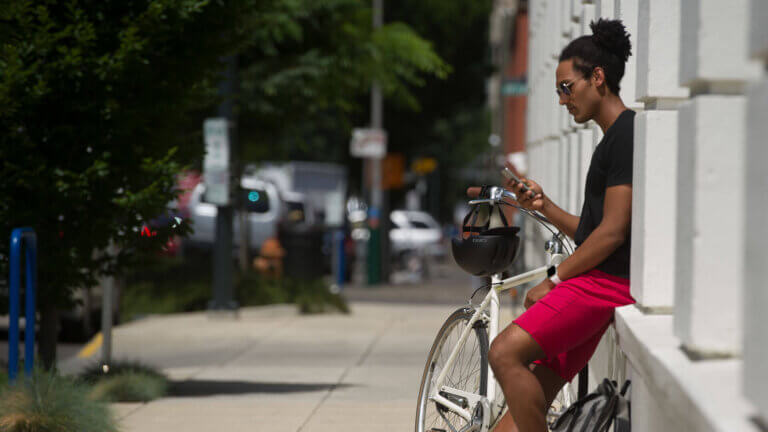
3 Mobile Engagement Tactics to Better Connect with Students
Gearing up for the 2017 School Year
Ready or not, school either has or is about to begin. And if you are a university or academic organization, communicating with students is a critical part of setting them up for success.
The key? Use their phones. Mobile apps are a surefire way to communicate with this ever-so-mobile audience given the ever-present nature of their phones. Let’s explore five use cases educators and administrators can employ to ensure a greater degree of mobile engagement — and help ensure a successful school year ahead.
Pair Push Notifications with Other Channels as Part of Your Mobile Engagement Strategy
Push notifications can easily and quickly share new information with your entire student body. They can be segmented to specific groups, sent at specific times or delivered when a user is in a specific area.
The University of San Diego (USD) uses Urban Airship Engage to send push notifications as well as a message center within their app to communicate with students.
“Students are so used to seeing push notifications, it’s naturally intuitive for them to use,” said Avi Badwal, senior director, ITS ERPT at USD. “With push notifications, we can send on-the-go students messages and have them engage with academic and campus activities.”
For example, USD uses push notifications — which are often segmented to specific student groups or deep linked to message center content — to inform students about campus events such as student elections, important academic activities or a campus store sale.
Share Less Urgent Updates via Message Center
USD’s push notifications are also sent to the app’s message center where students can later read them at their convenience. Academic organizations can also use the message center to share less time-sensitive information, such as the slated opening of a new building, a special meal at one of the dining areas or a movie screening at a specific dorm.
The school found that push notifications were 3x more likely to be viewed and acted upon than email, which is not surprising given the mobile, app-driven nature of millennials.
To learn more about the University of San Diego’s mobile engagement strategy, check out the case study.
Message Specific Groups With Segmentation and Location
Similarly, the University of Windsor’s app connects with nearly 15,000 students to keep them engaged and up-to-date on everything related to their university experience.
The myUWindsor app uses segmented push notifications that are also integrated with CLEW, the university’s teaching and learning software. When an instructor posts new information, or content on their course website, only students in that class receive a message with this information.
Segmentation also plays a role in its app strategy when the University Registrar sends push notifications to specific groups of students to notify them about a class cancellation due to weather or instructor illness. The university said that “without push notifications, the app wouldn’t have been as successful,” as 84% of students have the app and the majority access it daily.
Keep Students Safe with an Emergency Push Notification Service
While not exactly a “fun” use case to plan for, schools also have the responsibility to prepare for less-than-ideal communications in order to keep students safe.
In the case of unexpected weather events, etc. push notifications are a good channel to use to disperse an evacuation plan/route and other information, given that they are quickly delivered to a user’s lock screen. The University of Alberta uses push notifications for these types of situations.
Additionally, sounds can be added to these emergency-type notifications (more on that here) to make sure messages are heard loud and clear.
Create Mobile I.D. Cards with Mobile Wallet
Not every academic institution has an app, however, but that doesn’t mean they can’t use mobile as a channel to reach students. Schools can easily take advantage of mobile wallet, which reaches their target audiences with or without an app.
More than half of all respondents from our recent mobile wallet survey indicated they’d like the opportunity to use their mobile wallet to house I.D. cards. The Millennial audience is already using mobile wallets at a higher rate than the rest of the population, with 67% of Millennials having used a mobile wallet pass in the past three months. (Learn more about how consumers want to use mobile wallets in our upcoming webinar.)
Mobile wallet passes are a great way to digitize student I.D. cards, as well as faculty access cards. Say goodbye to the days of students losing their I.D. cards and having to coordinate a replacement card, and hello to reduced administration costs.
With mobile wallet, students have access to their I.D. card, or pass, via Apple Wallet or Android Pay (depending on their device). These passes can include a photo and information about the student and are able to be scanned and updated. For example, a student can pay for their meals by scanning their pass at campus eateries and the pass can reflect their current meal point balance.
We Can Help
Interested in learning more about how you can optimize your mobile app and push notification strategy for the upcoming school year? Check out our whitepaper on Mobilizing the Student Experience, or sign up for a free trial.
Subscribe for updates
If the form doesn't render correctly, kindly disable the ad blocker on your browser and refresh the page.
Related Posts


Why Every App Should Have a Message Center
